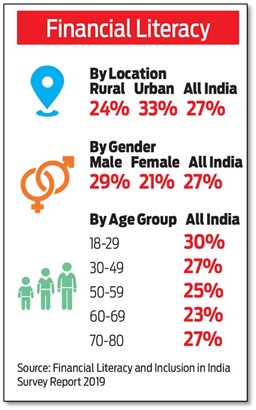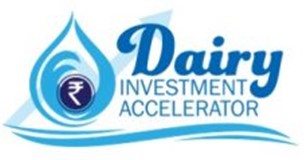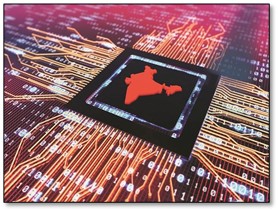Friday, 23rd July 2021
Production-linked Incentive (PLI) Scheme for Specialty Steel
In News
Union Cabinet approved the Production Linked Incentive (PLI) Scheme for specialty steel.
Details of the Scheme
- Specialty steel is value added steel wherein normal finished steel is worked upon by way of coating, plating, heat treatment, etc to convert it into high value added steel which can be used in various strategic applications like Defence, Space, Power, apart from automobile sector, specialized capital goods etc.
- The five categories of specialty steel have been chosen in the PLI Scheme: Coated/Plated Steel Products, High Strength/Wear resistant Steel, Specialty Rails, Alloy Steel Products and Steel wires, and Electrical Steel.
- There are 3 slabs of PLI incentives, the lowest being 4 % and highest being 12% which has been provided for electrical steel (CRGO).
- A cap of ₹200 crore per company will be imposed under the PLI scheme.
- The scheme has a budgetary outlay of ₹6322 crores and duration of the scheme will be five years, from 2023-24 to 2027-28.
Need of PLI scheme for Speciality steel
- Speciality steel has been chosen as the target segment because
- Out of the production of 102 million tonnes steel in India in 2020-21, only 18 million tonnes value added steel/speciality steel was produced in the country.
- Out of 6.7 million tonnes of imports in 2020-21, nearly 4 million tonnes import was of specialty steel alone resulting in FOREX outgo of nearly Rs. 30,000 crores.
- India presently operates at the lower end of the value chain in Steel sector. This is because of the disabilities faced by the steel industry to the tune of USD 80-100 per ton, on account of higher logistics and infra cost, higher power and capital cost and, taxes and duties.
- By becoming Aatmanirbhar in producing speciality steel, India will move up the steel value chain and come at par with advanced steel making countries like Korea and Japan.
Benefits of the scheme
- The scheme is expected to bring in investment of approximately ₹40,000 crores and capacity addition of 25 MT for speciality steel.
- The scheme will give employment to about 5,25,000 people of which 68,000 will be direct employment.
- It is expected that the speciality steel production will become 42 million tonnes by the end of 2026-27. This will ensure that approximately 2.5 lakh crores worth of speciality steel will be produced and consumed in the country which would otherwise have been imported.
- The export of specialty steel will become around 5.5 million tonnes as against the current 1.7 million tonnes of specialty steel getting FOREX of Rs 33,000 crore.
SOURCE:
Digital Rupee
In News
The RBI is working towards a phased plan for the implementation of a Central Bank Digital Currency (CBDC).
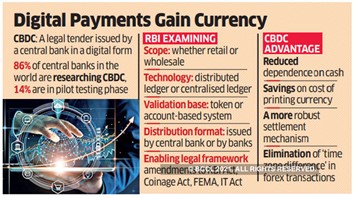
About the News
- Global Phenomenon: With this, India joins the likes of China, Russia and the UK among major economies evaluating the issuance of their own digital currency.
- Important aspects: The RBI is closely examining several aspects of launching a general purpose CBDC at population scale. This includes scope--whether retail or wholesale; technology--distributed ledger or centralized ledger; validation base--token or account-based system; and distribution format--issued directly by the central bank or by banks.
- Legal Framework: For launching a CBDC, an enabling legal framework would also need to be considered. This will include amendments to the RBI Act as well as provisions of the Coinage Act of 2011, the Foreign Exchange Management Act and the Information and Technology Act.
- Central Control: Unlike Bitcoin and other cryptocurrencies, which are based on peer-to-peer network, digital rupee will be monitored within a framework by the Reserve Bank of India.
What is a Digital Currency and Central Bank Digital Currency (CBDC)?
- Digital currency: It is a form of currency that is available only in digital or electronic form, and not in physical form. It is also called digital or electronic money, or cyber cash.
- Legal tender: The RBI defines CBDC as a legal tender issued by a central bank in a digital form. It is the same as a fiat currency and is exchangeable one-to-one with the fiat currency. Only its form is different.
- Minimise Risk: Private virtual currencies like Bitcoin don't fit RBI's definition of currency and one of the factors driving central banks around the world including India to experiment with CBDC is to minimise the risks of cryptocurrency on the real economy.
Benefits of CBDC
- Inexpensive and easy: CBDCs can lead to a reduced dependence on cash, savings on the cost of printing currency as well as a more robust settlement Elimination of the time zone difference in foreign exchange transactions, which could foster a cheaper and smoother international settlement system.
- Good for the Economy: CBDCs could be designed to promote non-anonymity of monetary transactions and financial inclusion by direct transfers. Interest-bearing digital fiat can also increase the economy’s response to changes in the policy rate. In emerging markets, facing large scale-capital inflows, CBDC can act as an instrument of sterilization, alleviating the constraint that a finite stock of government securities in the central bank’s balance sheet poses.
Sources:
- India Eyeing Phased Roll Out of Central Bank Digital Currency
- RBI working towards 'phased introduction' of digital rupee
- Working Towards Phased Plan for Digital Rupee: RBI Deputy Governor
Image Source:
Renewable Energy Certificate (REC) Mechanism
In News
Ministry of Power has circulated a Discussion paper on redesigning the Renewable Energy Certificate (REC) Mechanism for comments of stakeholders in power sector.
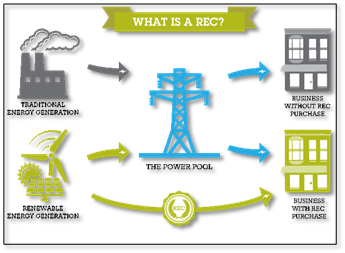
About the News
- India is looking to revamp the tradable renewable energy certificate (RECs) mechanism to boost its green economy, through measures like making such RECs perpetual, and promoting new technologies.
- India has set a target of 450GW renewable energy capacity by 2030. It currently has an installed renewable energy capacity of 89.63GW, with 49.59GW under execution. Also, ₹7 trillion has been invested in the country’s renewable energy space in the past six years, with an expected ₹1 trillion investment opportunity annually till 2030.
What are Renewable Energy Certificates (REC)?
- A Renewable Energy Certificate (REC), sometimes called a Renewable Energy Credit, is a tradable, legal mechanism that represents the environmental benefits associated with one Megawatt-hour of electricity generated from a renewable energy resource.
- One Renewable Energy Certificate (REC) is treated as equivalent to 1 MWh. There are two categories of RECs in India, viz., solar RECs and non-solar RECs.
- These certificates may be sold and traded and the owner of the REC can legally claim to have purchased renewable energy. RECs incentivize the production of renewable energy by providing a source of revenue to electricity generated from renewable sources.
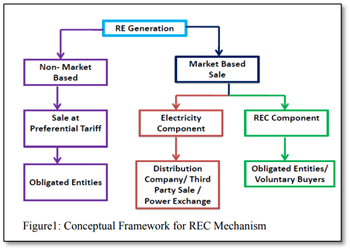
The REC Framework in India
- The RE generators have two options - either to sell the renewable energy at preferential tariff fixed by the concerned Electricity Regulatory Commission or to sell the electricity generation and environmental attributes associated with RE generation separately.
- The REC can be exchanged only in the Power Exchanges approved by Central Electricity Regulatory Commission (CERC) within the band of a floor price and a forbearance (ceiling) price to be determined by CERC from time to time.
- A pan-India market has been created for trading in RECs through the CERC approved Power Exchanges. National Load Despatch Centre (NLDC) has been designated as the Central Agency. NLDC is responsible for registration of Renewable Energy Generation Facilities, issuance of Renewable Energy Certificates etc.
- The distribution companies, Open Access consumer, Captive Power Plants (CPPs) have an option of purchasing the REC to meet their Renewable Purchase Obligations (RPO). RPO is the obligation to purchase minimum level of renewable energy out of the total consumption in the area of a distribution licensee.
Why have RECs been introduced?
- The Electricity Act, 2003, the policies framed under the Act, as also the National Action Plan on Climate Change (NAPCC) provide for a roadmap for increasing the share of renewable in the total generation capacity in the country.
- However, Renewable Energy (RE) sources are not evenly spread across different parts of the country. REC Mechanism provides a means to address the dispersed availability of renewable energy sources across various States in the Country. It separates the ‘green’ component from the ‘electricity’ component and facilitates the obligated entities in meeting of the Renewable Purchase Obligation (RPO) by addressing the issues of geographical Constraints and Inter-State Transfer of Power from Renewable Energy Sources.
Why are changes being introduced in the REC mechanism?
- Increasing green contribution: India aims at increasing the non-fossil fuel share in the electricity energy basket in order to meet the international commitment. India is running the world’s largest clean energy programme to achieve 175 GW of renewable capacity, including 100GW of solar power and 60 GW of wind power by 2022.
- Energy Security: It is also observed that cost of power from conventional sources is on the rise due to increasing cost of fuel and the railway freight etc., whereas the cost of power from RE sources like Solar PV etc., is witnessing down trend. Hence, India is promoting new sources of RE like offshore wind, Hydrogen, Pumped storage hydro plant (PSP) etc. for future energy security.
- Changing Priorities: During the inception stage of promoting RE, the impetus was to compensate for the high cost of RE Technologies. However, in the present context, the thrust is to support the growth of the RE Generation. Promotion of RE Power is pivotal for India to achieve its Intended Nationally Determined Contributions (INDCs).
- Support for News sources of RE: The increase in penetration of the less mature and high cost RE technologies like Off-shore wind, Hydrogen, etc., may require larger support depending upon their relative maturity, development cost and associated risk.
Major Changes proposed in the REC mechanism
- Validity Period: The REC validity period may be removed. Thus, the validity of REC would be perpetual i.e. till it is sold. Such a mechanism provides a safety net for renewable power developers by guaranteeing the purchase of electricity, making these projects much more bankable.
- Monitoring: CERC will be required to have monitoring and the surveillance mechanism to ensure that there is no hording of the RECs and creation of artificial price rise in the REC market. CERC may intervene if such case of malpractices is observed in the REC trading.
- Multiplier: A technology multiplier has been proposed for promotion of new and high priced RE technologies, which can be allocated in various baskets specific to technologies depending on maturity.
- Change in role of traders: The role of trader can be enhanced in the REC trading which will bring in two key advantages i.e. it will give long-term visibility to the buyers of the REC and they can easily fulfil the RPO. Further, the small buyers can bank on the traders for buying REC as an ease of purchase. This will ensure even the small buyers who finds difficulty in trading in REC market will be able to fulfil his RPO
Conclusion
The energy mix in India is rapidly changing from fossil fuel dominance to increasing non-fossil fuel share. With an impetus on promoting RE, Pan-India market-based REC Mechanism was introduced and has achieved success in a very short span of time. The current REC framework needs to be revised periodically to meet the ever growing demand of RE market and meet the climate change obligations.
Question: What is Renewable energy Certificate and why has it been introduced in India? Discuss the need for revision of the REC mechanism.
Sources:
- India to revamp renewable energy certificate mechanism
- revised_discussion_paper_on_REC_mechanism_07_June_2021
- Renewable Energy Certificate (REC)
- Frequently Asked Questions
- About REC
- Why REC was introduced?
Image Source:
This Day in History - Bal Gangadhar Tilak
On July 23, 1856 Bal Gangadhar Tilak was born in Ratnagiri, Maharashtra. His real name was Keshav Gangadhar Tilak. He was a freedom fighter, social thinker, philosopher and teacher, who had played an important role in India's freedom movement. In 1884, Tilak established the Deccan Education Society to impart nationalist principles to young people. He is also credited with having begun the Ganeshotsav and Shiv Jayanti celebrations in Maharashtra and Gujarat that enabled assembly of nationalists.
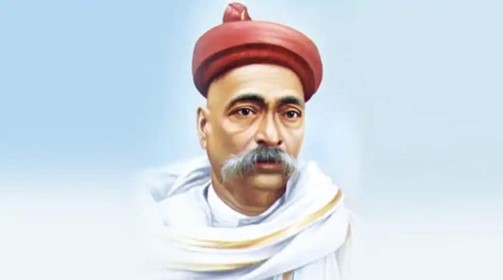
Sources:
Image of the Day – King Cobra
This is image of the king cobra eating another cobra was shared on Twitter by an IFS officer. The king cobras are actually not really cobras. They belong to a separate genus called Ophiophagus, where Ophio refers to snake and phagus means eater, i.e. king cobras are primarily snake eaters and occasionally feed on monitor lizards. These snakes are the only ones in the world that build a nest and care for their eggs. In India they inhabit a range of different habitats: wet forests of the Western Ghats and Northeast, dry areas along the Eastern Ghats, cold climes of the lower Himalayan regions, and even in hot humid areas of the Andaman Islands.

Sources:
Project 75 (India) [P-75(I)]
- Context: Defence Ministry has issued the first P 75(I) submarine tender.
- Project-75(I) envisages indigenous construction of six modern conventional submarines (including associated shore support, Engineering Support Package, training and spares package) with contemporary equipment, weapons & sensors including Fuel-Cell based AIP (Air Independent Propulsion Plant), advanced torpedoes, modern missiles and state of the art countermeasure systems.
- AIP technology allows conventional diesel-electric submarines to remain underwater for longer, enhancing its lethality.
- The other countries that have AIP system include China, Germany, Sweden, France, Spain and Russia.
![Project 75 (India) [P-75(I)].jpg](https://edukemyprodstorage.blob.core.windows.net/edukemy-v2-assets-public/newsletter-images/1627054443blobid1627054438697.jpg/W6TFXDZzWU0Cqgyak9Wm8sfnvg6u9wuBONDiS2Hs.jpg)
Source:
- MoD issues RFP for construction of six P-75(I) submarines for Indian Navy
- Defence Ministry issues formal tender for mega submarine programme
- Can offer technology to let subs stay under water for 2 weeks: Russia
Image source:
Harela Festival
- Context: Harela festival was celebrated by villagers across Uttarakhand.
- Harela means ‘day of green’ and is celebrated in the month of Shravan (the fifth month of the Hindu lunar calendar) to worship Lord Shiva and Goddess Parvati.
- The seeds of five to seven types of crops - maize, til (sesame), urad (black gram), mustard, oats are sown in donas (bowl made of leaves) or ringalare (hill bamboo baskets) nine days before the festival.
- They are harvested on the ninth day and distributed to neighbours, friends and relatives.
- Harela is also linked to the Barahnaza system (12 types of crops), a crop diversification technique followed in the region.
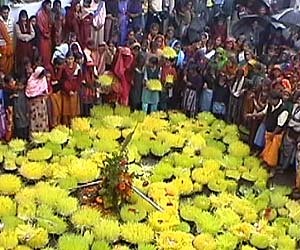
Source:
Image source:
Avian Flu/ H5N1
- Context: Delhi has recently recorded the first death due to the bird flu in India this year.
- Bird flu or avian influenza is a disease caused by avian influenza Type A viruses found naturally in wild birds worldwide.
- The virus can infect domestic poultry including chickens, ducks, turkeys and can also infect pigs, cats, and tigers.
- The infection is deadly as it has a high mortality rate of about 60% and the most common route of virus transmission is direct contact - when a person comes in close contact with infected birds, either dead or alive.
- The most vulnerable groups to the infection include children and adults below 40 years of age and mortality was high in 10-19 years olds.
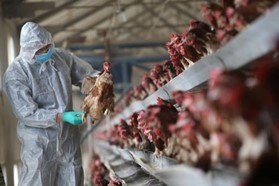
Source:
Image Source:
Expanding India’s foreign policy canvas – Hindustan Times
Essence: Editorial is explaining the need to expand our foreign policy bandwidth to include diverse contemporary issues like - negotiations on new global tax, climate crisis, health security, digital technologies and human mobility.
India emerged as a net beneficiary of the last wave of globalisation, despite going into it with considerable reluctance. With global changes of a different kind now in the making, we need a holistic approach to tackle them.
Geo-economics inevitably impacts geopolitics. Our willingness to encompass areas, which we previously considered beyond the pale of our foreign policy posture, will be key to our ability to navigate the coming wave of global changes.
Why you should read this article?
- To understand the need for India engaging pro-actively in negotiations to establish a minimum corporate tax regime.
- To gain insights into the link between geopolitics & geoeconomics in global politics, and how Indian foreign policy priorities are also evolved with time.
- To be aware of future prospects for advancing a broader global agenda, through diplomacy.
Source:
Bangladesh's Microfinance: Case study for reducing poverty
Background
- Bangladesh's microfinance operations began in the 1970s in which the Grameen Bank through micro-credit programmes played predominant role in transforming the rural social and economic landscape.
How the Grameen Bank did it?
- Self-sustaining system: Mohamad Yunus built a self-sustaining system of lending and borrowing without collaterals and with minimal default. It focussed more on women and organised them to take collective responsibility for the business.
- Focus on entrepreneurship: He promoting a wave of entrepreneurial activity at the rural level, effectively changing the structure of the Bangladeshi economy.
- Reaching the last man in the row: Model focussed on remotest villages where government aid did not reach to enter healthcare
- Social activities: 75% of the microfinance institutions had major focus on education, healthcare, water and sanitation, women empowerment and economic development.
Outcome
- Structural transformation: Bangladesh achieved structural transformation with manufacturing and exports driving its growth in output and employment.
- Fall in rural poverty: Due to this model, total reduction in extreme poverty was more than 10% in less than a decade.
- Inclusive growth: Bangladesh was put on a higher growth trajectory and model ensured that growth does not breed inequality
- Women empowerment: Model made significant strides in educating girls, achieving gender equality and increasing labour force participation rate for women.
Where can this case study be used?
- GS Paper 1: Social Empowerment, Role of Women and Women’s Organization
- GS Paper 2: Development Processes and the Development Industry- Role of NGOs, SHGs, various groups and associations, donors, charities, institutional and other stakeholders
Share the article
Get Latest Updates on Offers, Event dates, and free Mentorship sessions.

Get in touch with our Expert Academic Counsellors 👋
FAQs
UPSC Daily Current Affairs focuses on learning current events on a daily basis. An aspirant needs to study regular and updated information about current events, news, and relevant topics that are important for UPSC aspirants. It covers national and international affairs, government policies, socio-economic issues, science and technology advancements, and more.
UPSC Daily Current Affairs provides aspirants with a concise and comprehensive overview of the latest happenings and developments across various fields. It helps aspirants stay updated with current affairs and provides them with valuable insights and analysis, which are essential for answering questions in the UPSC examinations. It enhances their knowledge, analytical skills, and ability to connect current affairs with the UPSC syllabus.
UPSC Daily Current Affairs covers a wide range of topics, including politics, economics, science and technology, environment, social issues, governance, international relations, and more. It offers news summaries, in-depth analyses, editorials, opinion pieces, and relevant study materials. It also provides practice questions and quizzes to help aspirants test their understanding of current affairs.
Edukemy's UPSC Daily Current Affairs can be accessed through:
- UPSC Daily Current Affairs can be accessed through Current Affairs tab at the top of the Main Page of Edukemy.
- Edukemy Mobile app: The Daily Current Affairs can also be access through Edukemy Mobile App.
- Social media: Follow Edukemy’s official social media accounts or pages that provide UPSC Daily Current Affairs updates, including Facebook, Twitter, or Telegram channels.

